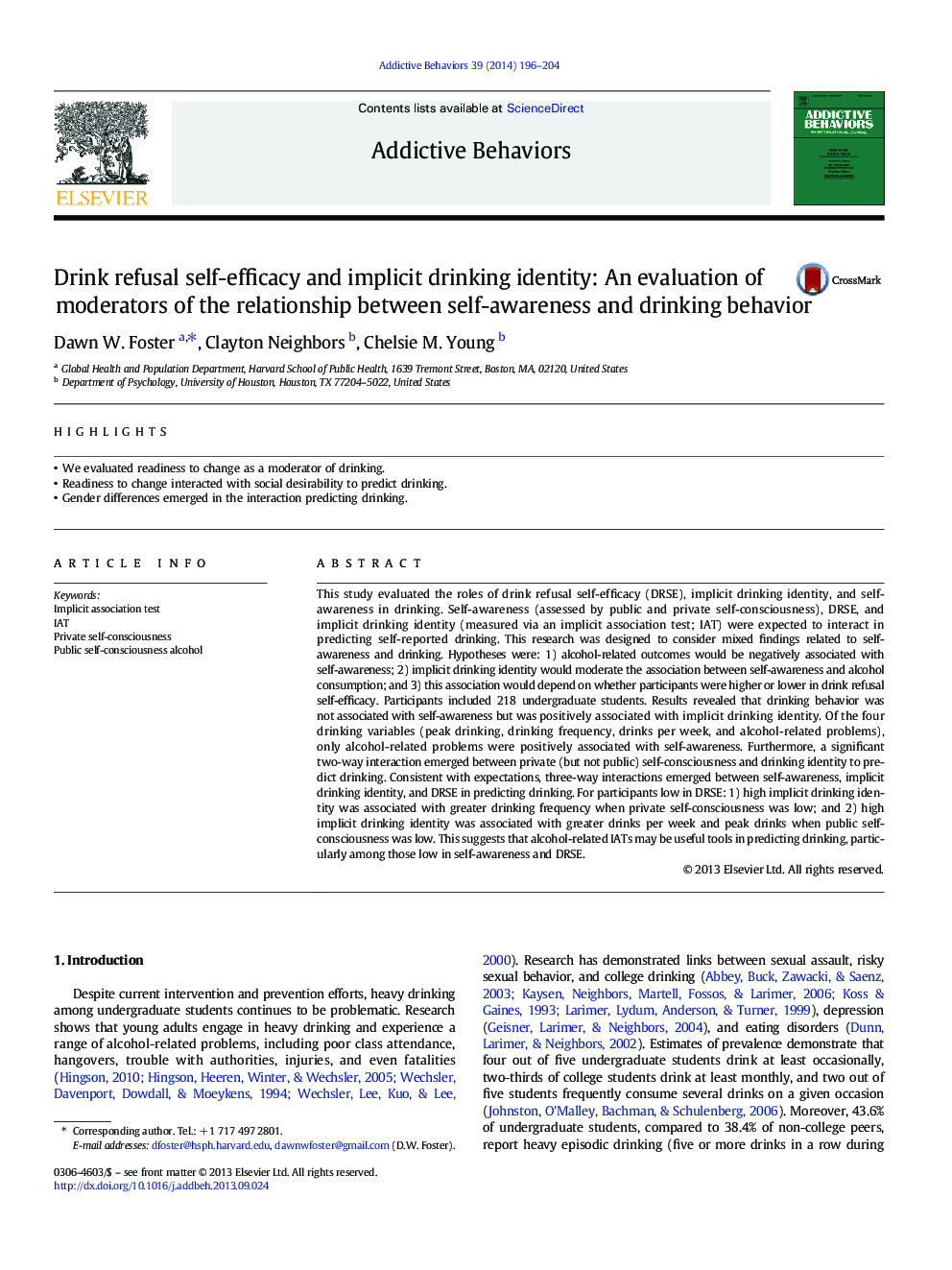| کد مقاله | کد نشریه | سال انتشار | مقاله انگلیسی | نسخه تمام متن |
|---|---|---|---|---|
| 898993 | 915352 | 2014 | 9 صفحه PDF | دانلود رایگان |
• We evaluated readiness to change as a moderator of drinking.
• Readiness to change interacted with social desirability to predict drinking.
• Gender differences emerged in the interaction predicting drinking.
This study evaluated the roles of drink refusal self-efficacy (DRSE), implicit drinking identity, and self-awareness in drinking. Self-awareness (assessed by public and private self-consciousness), DRSE, and implicit drinking identity (measured via an implicit association test; IAT) were expected to interact in predicting self-reported drinking. This research was designed to consider mixed findings related to self-awareness and drinking. Hypotheses were: 1) alcohol-related outcomes would be negatively associated with self-awareness; 2) implicit drinking identity would moderate the association between self-awareness and alcohol consumption; and 3) this association would depend on whether participants were higher or lower in drink refusal self-efficacy. Participants included 218 undergraduate students. Results revealed that drinking behavior was not associated with self-awareness but was positively associated with implicit drinking identity. Of the four drinking variables (peak drinking, drinking frequency, drinks per week, and alcohol-related problems), only alcohol-related problems were positively associated with self-awareness. Furthermore, a significant two-way interaction emerged between private (but not public) self-consciousness and drinking identity to predict drinking. Consistent with expectations, three-way interactions emerged between self-awareness, implicit drinking identity, and DRSE in predicting drinking. For participants low in DRSE: 1) high implicit drinking identity was associated with greater drinking frequency when private self-consciousness was low; and 2) high implicit drinking identity was associated with greater drinks per week and peak drinks when public self-consciousness was low. This suggests that alcohol-related IATs may be useful tools in predicting drinking, particularly among those low in self-awareness and DRSE.
Journal: Addictive Behaviors - Volume 39, Issue 1, January 2014, Pages 196–204
